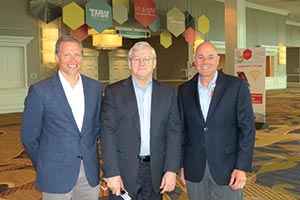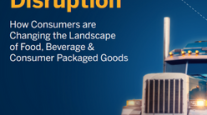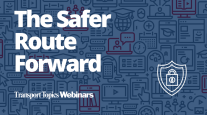Managing Editor, Features and Multimedia
Trimble Aims to Harness Data, Eyes Role in Automated Driving

This story appears in the Oct. 3 print edition of Transport Topics.
NASHVILLE, Tenn. — The top executives at Trimble Navigation Ltd., which owns several of trucking’s largest technology suppliers, said they see opportunities to harness an explosion of data from electronic logging devices and connected vehicles in the years ahead and also are eyeing a potential role in the movement toward automated driving.
CEO Steve Berglund, Chief Financial Officer Rob Painter and Vice President Jim Veneziano outlined the company’s strategy and shared their views on how technology will change the transportation industry during a Sept. 26 interview here with Transport Topics.
The Trimble executives were attending the first combined user conference of PeopleNet and TMW Systems, which the firm purchased in 2011 and 2012, respectively.
They said the federal government’s mandate of electronic logging devices, set to go into effect in December 2017, will dramatically expand the amount of information collected and transmitted in trucking.
“The mandate is going to turn every truck into an IP address on the internet,” said Veneziano, referring to the internet protocol that identifies a device. He oversees Trimble’s international transportation and logistics division.
That increased visibility will help enable new services to further enhance efficiency, he said.
“Once I have that IP address, I have a massive amount of data that feeds into this ecosystem that allows us to do things that you’ve never been able to do before,” Veneziano said. “That opportunity is much larger than just putting a telematics device in the truck.”
While regulations such as the ELD mandate are driving technology adoption in some cases, the real value is not merely in compliance but in improving productivity, Painter said.
“You have to have technology to stay productive, to stay competitive,” he said. “There is a sense that the more the industry adopts technology, those who don’t might find themselves left behind.”
Painter also sees the expansion of trucks’ remote diagnostics systems as an opportunity to use additional data to enhance services.
Third-party companies such as Trimble would be in a position to act as a neutral provider to aggregate the data for carriers operating a mixed fleet of vehicles from multiple manufacturers, he said.
Meanwhile, Trimble is also investigating potential opportunities in autonomous driving, Berglund said.
“At this point in time we’re simply trying to figure out the appropriate role for us to play,” he said.
Berglund said much of the technology developed for on-the-road autonomy thus far has centered on “relative positioning,” such as the vehicle’s proximity to other vehicles, typically monitored through onboard radar and cameras, as well as lidar in some cases.
However, he cited “a growing realization that there is a need for absolute positioning as well. At that point, a normal, run-of-the-mill GPS isn’t sufficient.”
He said Trimble has several relevant technologies, such as its RTX satellite-based position correction service that measures location within centimeters.
The next level of intelligent transportation will involve more than just the vehicle, Berglund said, adding that smart infrastructure could support advances such as traffic optimization.
“It’s more than just steering the vehicle, it’s really about the ecosystem that passenger vehicle or truck is playing in,” he said.
Berglund expects the development and implementation of automated driving systems to occur progressively over time. “I think there will be 1,000 little steps.”
At last week’s conference, Trimble’s integration strategy came into sharper focus as TMW and PeopleNet unveiled joint development efforts that closely link telematics and fleet management software to provide more precise information and planning tools.
Despite Trimble’s focus on integrating its own companies’ product lines, Veneziano reiterated that the company will continue to partner with outside suppliers as well.
The industry’s technology ecosystem “has to be open for it to work,” he said. “We’re always going to want to feed more and more data into that, so I would imagine the partnerships we have today will get even get stronger.”
That being said, a “Trimble on Trimble” integration “is going to give you a better answer” in some cases, Veneziano added.




